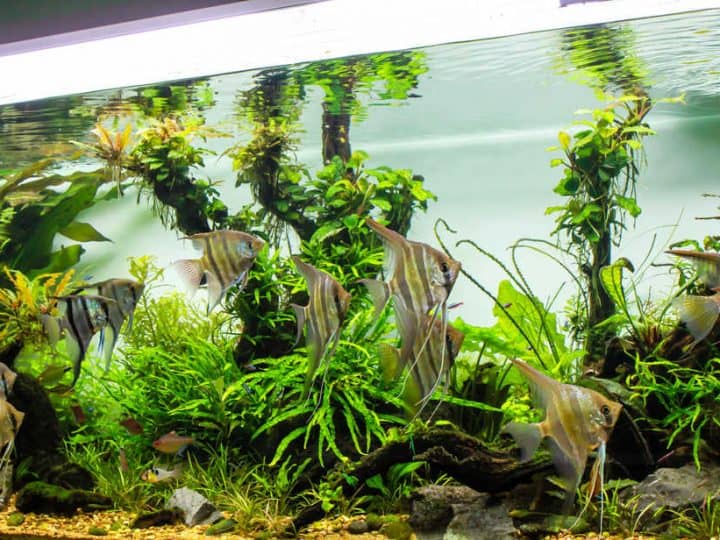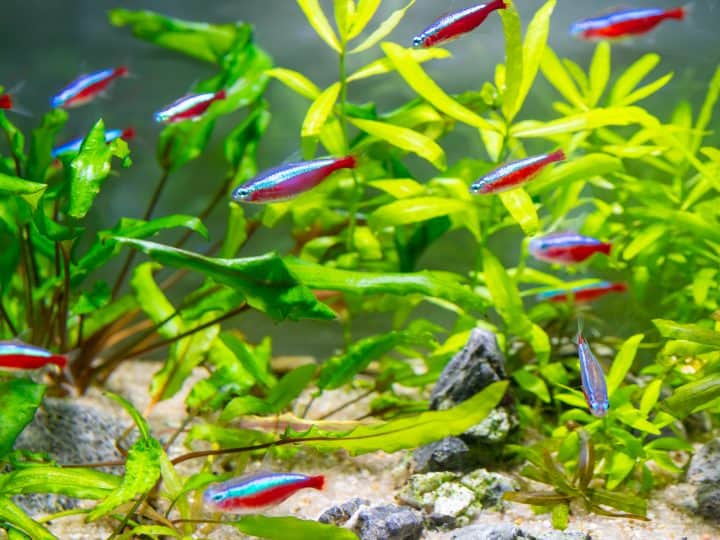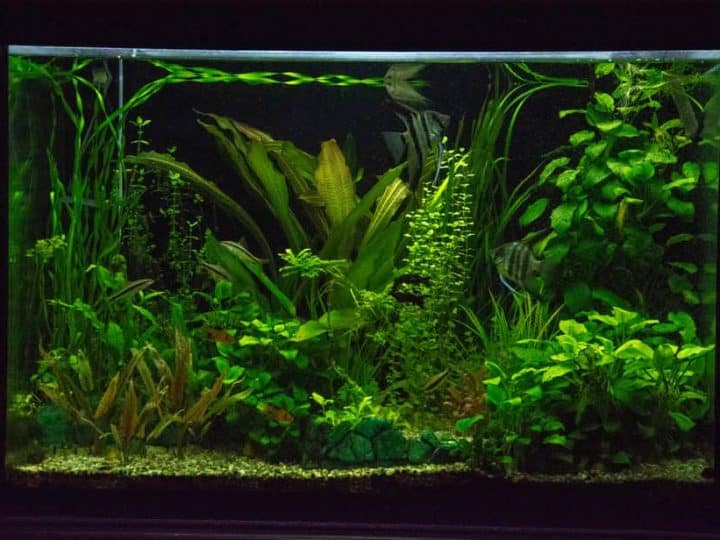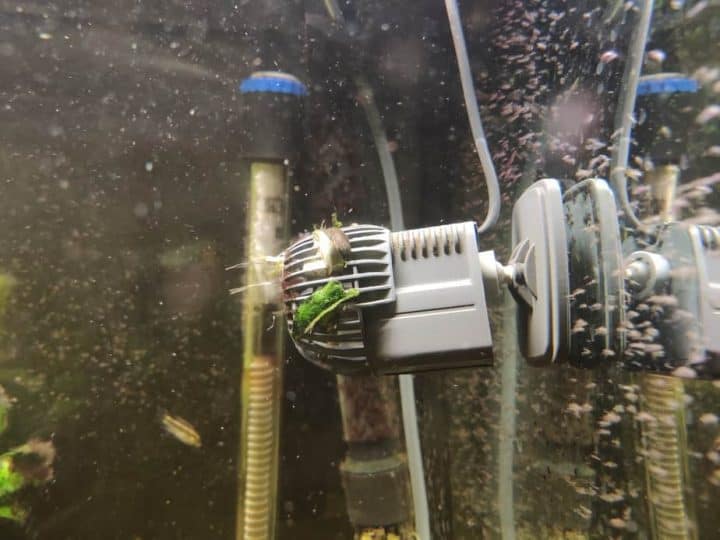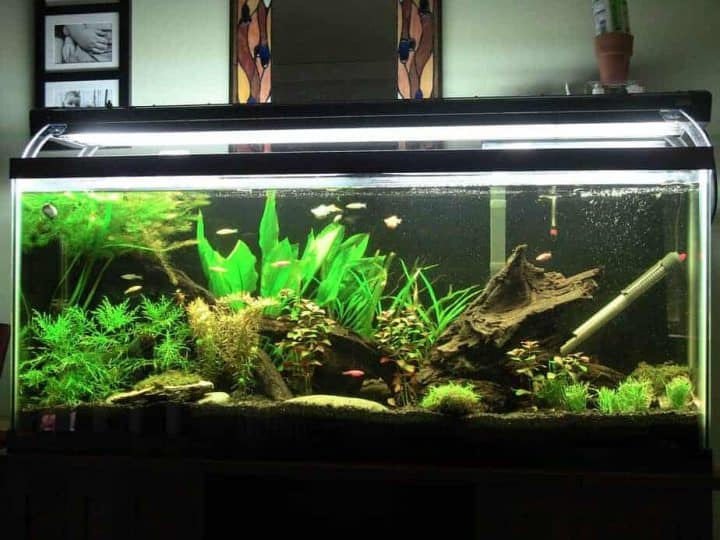Aquarium plants can be pretty expensive so propagating the plants already existing in your tank makes more sense. Propagating aquarium plants is quite easy. All you need to know are the right techniques for it!
Quick Answer
You can propagate aquarium plants by various methods such as rhizome division, stem cutting, leaf cutting, and removing adventitious plants from parent plants. Use sharp scissors to get a clean cut. Utilize the cuttings to fill in empty spaces in your tank or to establish a new aquarium.
However, propagating aquarium plants isn’t that simple. Each plant species has distinct parts for propagation. Therefore, I have prepared a comprehensive guide that covers the propagation of all types of aquarium plants along with helpful tips, and benefits. So, let’s dive right in!
Propagating Techniques for Different Aquarium Plants
Plant propagation is a technique to cultivate new plants from existing ones using various parts such as stems, roots, seeds, etc. You can prepare a whole new aquarium by using the cuttings from your old tank by propagation.
Propagating aquarium plants help achieve a healthy, clean, lively, and thriving aquarium. But how can you propagate different aquarium plants? Let’s find out below!
Aquatic Plants That Propagate With Runners
Before we get to plants where you as an aquarist actually have to do some work to propagate plants, I wanted to cover plants that propagate through “runners”. The most common example of this is Vallisneria. What these plants will do is shoot out stems that grow along the substrate, from which new plants will emerge.
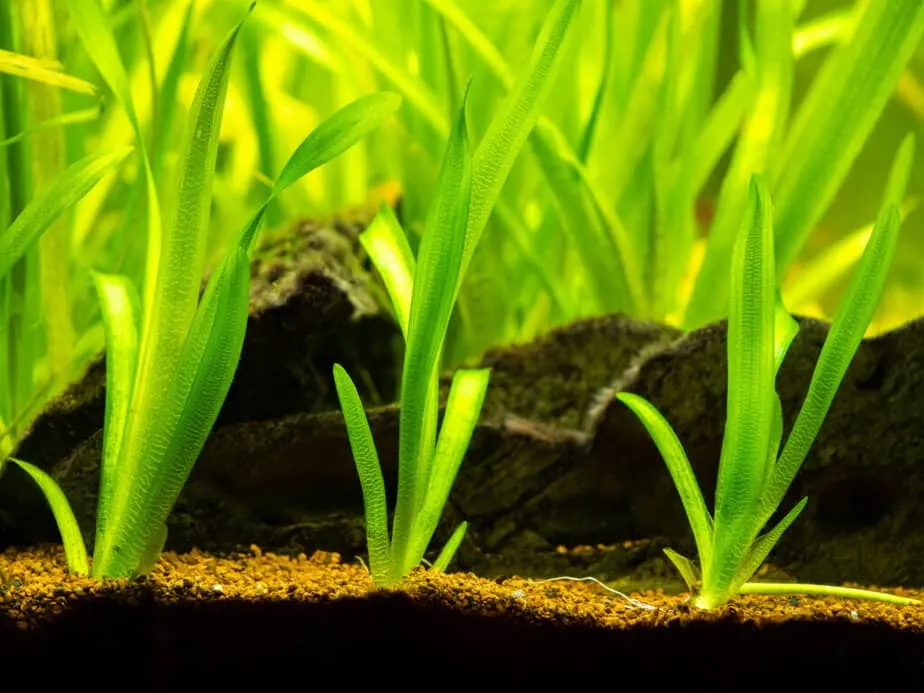
It actually is a very convenient way of propagating. If plants start to grow on places where you do not want them, simply cut off the runner and move the plant. You can replace them anywhere you like.
Plants in the Echinodorus family also can propagate through runners.
Propagating Rhizome Plants
Rhizome division is suitable for rhizome plants such as Anubias, Bolbitis, Bucephalandra, and Java Ferns. These plants have a thick stem which is quite easy to trim and propagate. You can propagate rhizome plants you have grown in your aquarium or store-bought ones in the same way.
Identifying the rhizome (the most important part of these plants) is a crucial step. Usually, you can see green shoots growing out from the roots in a Java fern. This is where you have to cut to propagate rhizome plants.
Use clean and sharp scissors to avoid damaging the root system. Cut right on the rhizome to divide the rhizome plants. You can make as many cuts as you want depending on the growth of the previous plant. But make sure the cuttings have roots and leaves attached.
Now you can plant the rhizomes at different locations or even a new tank. You will notice healthier sprouting within a few weeks from the shoots.
Important: Make sure you don’t squeeze the rhizome or damage it while propagating the rhizome plants. While replanting, the rhizome should be a little above the rocks or wood you attach it with to provide it with ample nutrients, light, and CO2.
Propagating Anubias
Anubias is also a rhizome plant that you can propagate through rhizome division. The only difference is that you can cut off the root system of Anubias below the rhizome without any problem. The root system is more for attachment than for nutrient intake.
Cut the rhizome of Anubias and replant it in the substrate. Removing the root system will make the replantation process effortless.
You can use the same rhizome division process for store-bought rhizome plants as well.
Propagating Stem Plants
Stem plants grow super fast and even come out of water. If you don’t trim your stem plants, the plants below won’t get sufficient light. Propagating stem plants using the stem-cutting method is one of the easiest ways to fill in empty spaces in your tank and keep everything tidy.
Stem cutting is suitable for plants such as Rotala Indica, Alternanthera Reineckii, etc.
All you have to do is to cut the stems (from any desired height) using scissors or by pulling them. You can use aquascaping scissors for a clean cut.
Remove some of the leaves from the bottom of your cutting. This promotes faster and healthier root growth.
Use a tweezer to insert the cutting into the substrate.
Note: You can take out some stem plants such as Pogostemon stellatus from the substrate, separate them from the roots to decrease the density, and cut the stems to propagate as well. However, simple stem cutting is an easier way to propagate these plants.
Propagating Moss Plants
Moss plants such as Java Moss, Flame Moss, Weeping Moss, etc can be easily propagated by pulling a piece of the moss plant and attaching elsewhere. Moss plants have the ability to grow from any part.
All you have to do is to turn off the filter of your aquarium to prevent any moss cuttings from flowing to an undesired place. Otherwise, moss plants will start growing there. Use your hands or scissors to cut the moss plant. Replant the cutting in a hardscape by tying or glueing it.
If you have a moss wall, you can take out some moss from it and place it in another mesh. This way, you can get more and more moss walls for your aquarium.
Propagating Adventitious Plants
Adventitious plants are young plants that grow on a parent plant. It can be a new shoot growing into a separate plant on the main stem or from the shoots.. You can remove the adventitious plant from the parent plant once it has grown approximately 3-4 cm.
You can replant it in the substrate to promote healthy growth as you would do with the main plant.
Separating adventitious plants from parent plants is important because eventually, it dies off on their own. It can also affect the health of the main plant if not removed on time.
Propagating Sword Plants
Sword plants such as Amazon Sword are famous for their strong root system. They’re also some of the plants that rely on their roots for the majority of their nutrients. In the hobby we call them root-feeding plants. Curious what other plants do this? I’ve composed a list of root-feeding aquatic plants.
Take out the plant including the root system from the gravel. Separate the plants from the middle using your hands. Make sure the leaves remain intact with the roots.
Replant different roots at different locations in your aquarium and wait for them to grow further.
Seed Propagation for Aquarium Plants
Seed propagation is a way to sexually propagate aquarium plants. To induce seed propagation in aquarium plants, follow the steps below:
- Allow the parent plant to produce flowers. Keep the water level low so that the plant can easily grow an aerial stem out of water.
- Take pollen from stamen to stigma using your fingers or a cotton swab.
- When the pollination is successful, seeds will grow in the flowers. Take out the seeds and submerge them in the soil. Don’t place the seeds directly in the aquarium.
- Let the seeds grow further into a small plant.
- You can now plant it in the aquarium.
Benefits of Plant Propagation and Trimming
The most noticeable benefits of propagating and trimming aquarium plants is the cleanliness and visual beauty it provides. However, there are additional benefits to propagation mentioned below!
- Trimming aquarium plants is crucial to promote the healthy growth of plants. Getting rid of yellow leaves and old roots results in a lively aquarium environment.
- When you break up the plants into different locations, the plants have different nutrient spots to use. This way, all the plants get an equal supply of nutrients and grow beautifully.
- Using already existing plants for a new aquarium is cost-effective as new plants can be expensive.
- When you trim the plants, hormones are released to induce more growth in the plant by developing new axillary buds.
- Dense plant growth provides a suitable environment for aquatic animals to reproduce.
- Plant propagation prevents algae growth as more and more plants compete with it for nutrients.
- Tall plants can cover up the plants underneath when grown too much. This way, the plants underneath don’t get enough light. So, propagation keeps the plants underneath healthy.
In Conclusion…
Now you know how to propagate aquarium plants whether they are rhizomes, stem plants, mosses, adventitious plants, or sword plants. Trimming, pruning, and propagating have several benefits. These methods are crucial for the maintenance of your aquarium and to promote a blooming environment.

